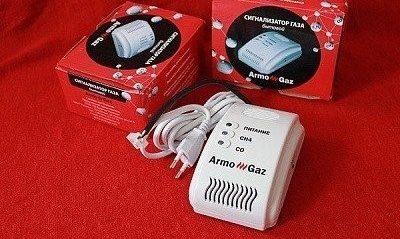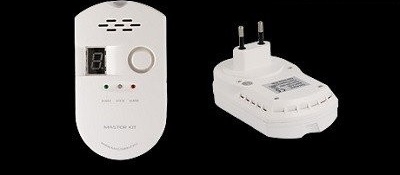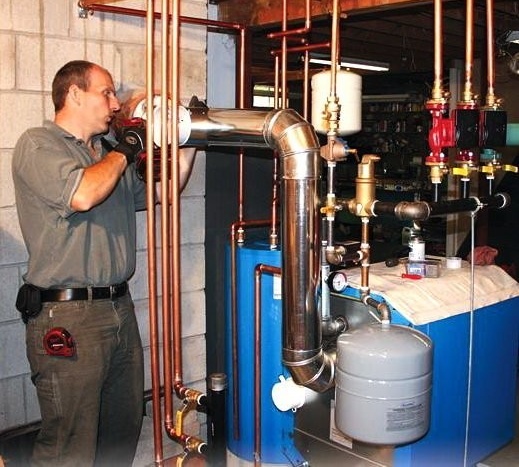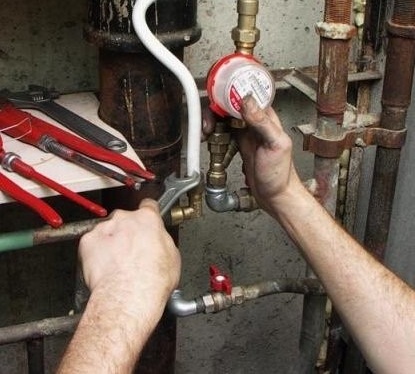Features of installation and rules for using a domestic gas detector
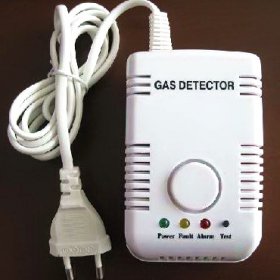
It is almost impossible to imagine a normal comfortable life without gas equipment in the house. The use of gas-fired appliances allows us to heat rooms, prepare food, and provide hot water at home. And all these devices can be potentially dangerous - a gas leak is possible, which can cause a fire or poisoning people. To prevent these disasters, gas alarms are installed - devices for monitoring the level of combustible gases in the air. Devices notify of a leak by sound and light signals, which can save lives, human health, property.
Content
Types of gas detectors and their functions
Gas detectors are used in domestic premises, in furnaces, boiler rooms, and industrial facilities. Depending on their purpose, household and industrial are distinguished. The first set the degree of gas pollution and are triggered if the gas concentration exceeds the specified parameters. The second have a more complex design and represent entire complexes of sensors and control panels for measuring and displaying the concentration of gases in the air. Domestic gas detectors can monitor the concentration of carbon monoxide, propane and methane.
Instruments can detect the presence of several gases in the air, such as carbon monoxide and methane. Such models are well suited for installation in rooms where heating equipment is installed. Devices may vary in type of power. Most often they use 220 V.
Gas detectors can be automatic and manual. Measurements of the level of gas contamination are based on different principles:
- physical analysis method;
- physical analysis method with physical reactions;
- physical analysis method with physicochemical reactions.
In addition to supplying a sound and light signal about the level of gas contamination exceeding a given one, household signaling devices can also perform other functions:
- to ensure the operation of the electromagnetic shut-off valve, blocking the flow of gas;
- the ability to connect a relay that controls an exhaust fan, a siren that sends a special signal to the control panel, and other devices;
- the ability to connect additional equipment;
- autonomous power supplies;
- self-diagnosis function that provides information on the status of the device and its elements.
The memory function of some models will be very useful in order to save the measurement results.
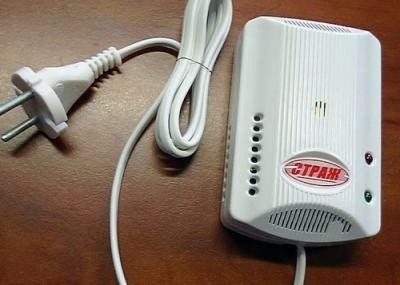
Some types of signaling devices determine the level of several gases in the air. Such models are called combined.
Gas detector installation technology
You can install a home gas alarm yourself. It is necessary to determine the location of the sensor, install it and supply power, and then connect additional equipment. Detailed installation instructions and wiring diagrams are indicated in the passport of a specific device. The location of the gas detector is determined in advance - even at the design stage of the gasification system.
Experts remind: when installing a gas detector, all the requirements of regulatory documents must be taken into account. The relevant clauses of such normative acts regulate this issue:
- Federal Law N 384-ФЗ;
- SNiP 42-01-2002;
- SP 62.13330.2011;
- SP 41-108-2004.
If you have doubts about your own strengths, there is not enough knowledge to choose a place to place the sensor, it is better to invite gas workers.
The signaling device is installed in places where a gas leak is most likely - next to the boiler, gas column for hot water supply, counter, stove. The maximum distance from the sensor to gas equipment is 4 m. It is forbidden to place devices in such places:
- near sources of open fire, gas burners, ovens; the distance must be at least 1 m;
- near places that can become sources of droplets of fat, particles of dust, steam or ash;
- near windows, uninsulated chimneys or ventilation;
- near paint and varnish compositions, solvents, combustible and fuel materials.
When determining the installation height of the detector, it is necessary to take into account the type of device, since the sensors that respond to different gases (CH4, C3H8, CO) determine the density of air and gas. You should focus on such distances:
- for a sensor detecting CO (carbon monoxide) - 1.8 m above the floor, but not lower than 0.3 m to the ceiling;
- C3H8 (propane) - a maximum of 0.5 m from the floor, and if there are any noticeable recesses, you must take care to install an additional sensor;
- CH4 (methane) - 0.5 m from the ceiling;
- CH4 and СО (combined) - 0.3 m-0.5 m to the ceiling.
The mounting method may vary depending on the model, but, as a rule, household gas detectors are mounted using dowels. Usually, special holes are provided in the housing for mounting sensors. Before installation, be sure to carefully read the product passport.
In the passport of each model the temperatures are indicated at which the operation of the device is possible. Long-term storage at low temperatures can affect the performance of the detector. To restore it, you need to leave the device in the room for 3-4 hours at room temperature. The operating instructions for some CO alarms describe the procedure for restoring the zero threshold. It usually takes a few minutes.
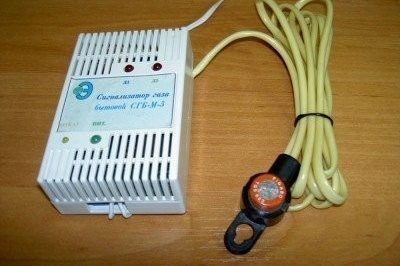
Pay special attention to the temperature regime of operation, in some cases it is necessary to withstand the device at room temperature
Why do you need solenoid shutoff valves?
These are devices that allow you to quickly shut off the gas supply in the event of a gas signal. Valves are mounted at the inlet of the gas pipeline. Devices may vary in diameter, power, type of valve. The last criterion is especially important.
There are normally open and normally closed valves. Normally open are also called pulsed, because an electrical signal enters the coil of such a valve only at the time the device is triggered. Voltage is applied to the coil of a normally-closed valve at the moment of opening, and cut-off occurs when the voltage disappears.
In everyday life, it is most rational to use a normally-open valve operating from a 220 V network.In the event of a power outage, the device does not work, which allows unlimited use of gas appliances that are independent of electricity. When open, the valve does not require power consumption for operation.
Like all appliances, a normally-open valve has some limitations in use. It is undesirable to install it together with a gas sensor that checks its outputs in automatic mode each time the power is turned on. The device will fire at these times. Therefore, even before buying a valve, you should carefully familiarize yourself with the features of its operation. Basic information is indicated in the documentation for the device.
Do-it-yourself installation and connection of the shut-off valve is not allowed. This type of work should be performed only by specialized organizations that have the appropriate permits.
Proper maintenance of gas detectors
The household gas detector is easy to operate and does not require any special maintenance. The care that should be ensured is minimal and consists in regularly wiping the device to remove dust, dirt, cobwebs. It is important to ensure that dust does not accumulate and does not enter the sensor body through the grill.
Verification of annunciators is carried out every year. Independent verification with the help of “grandmother’s methods” is unacceptable, for example, by supplying a sensor with a 100% mixture of gas from a lighter or other device. Such verification sometimes ends in failure of the sensor element. It is necessary to ensure metrological verification by specialists. The service is paid, and this should be considered in advance.
If a malfunction of the gas control system is detected, it is necessary to provide good ventilation in the room and call the gas service. Prior to the arrival of a specialist, do not turn on electrical appliances or use open flames.
Experts recommend giving preference to gas detectors of domestic production, since if it is necessary to replace the device, they are cheaper than imported counterparts when buying and repairing. In addition, repairs are usually faster.
A household gas detector is a simple and inexpensive device that almost anyone can afford. There is practically no hassle with its maintenance, you only need to promptly check the device and wipe it from dust. This simple device can one day save your life and the lives of people who are dear to you. Ask yourself whether it is worth installing an alarm, and the answer will most likely be yes.

